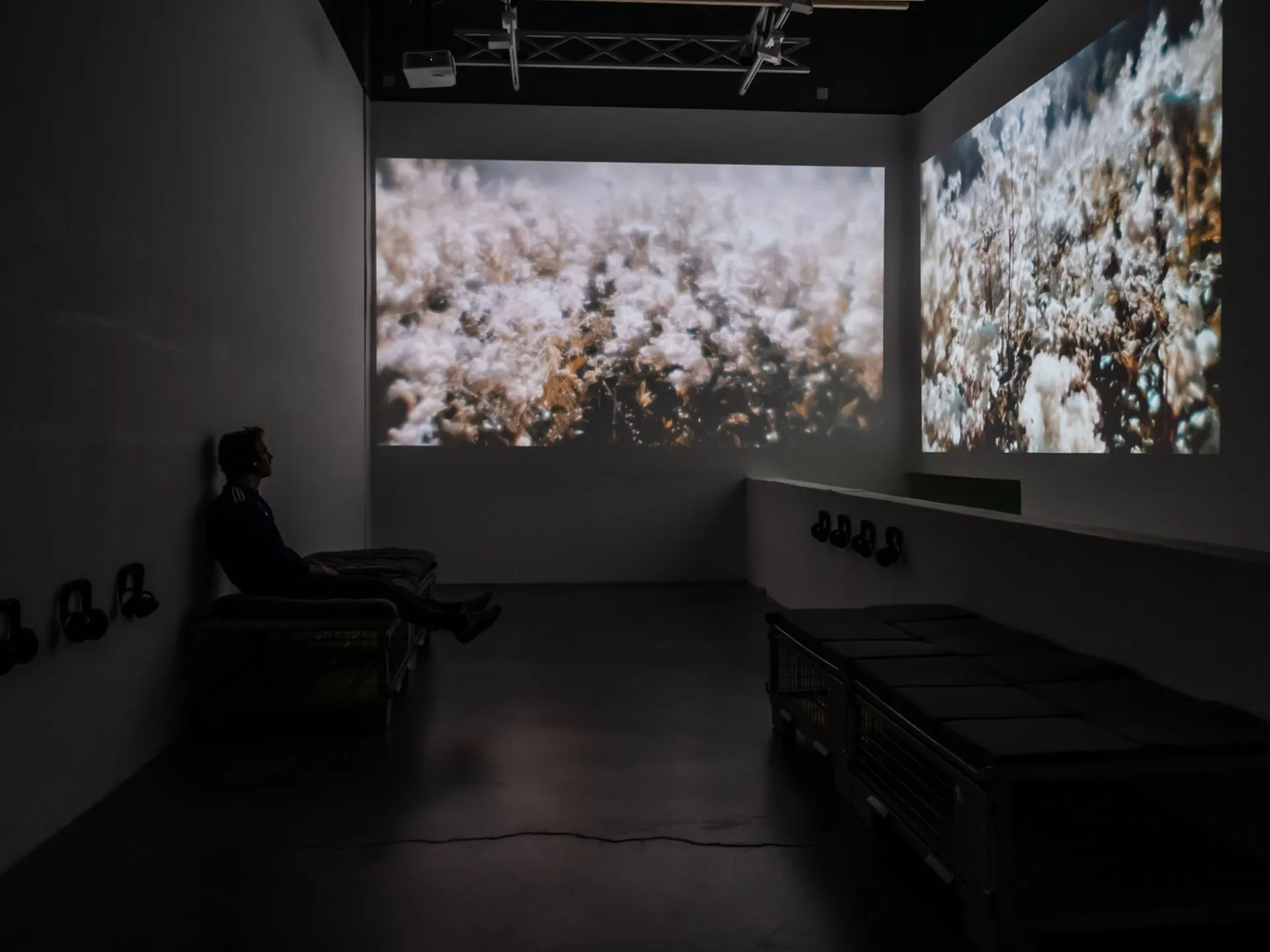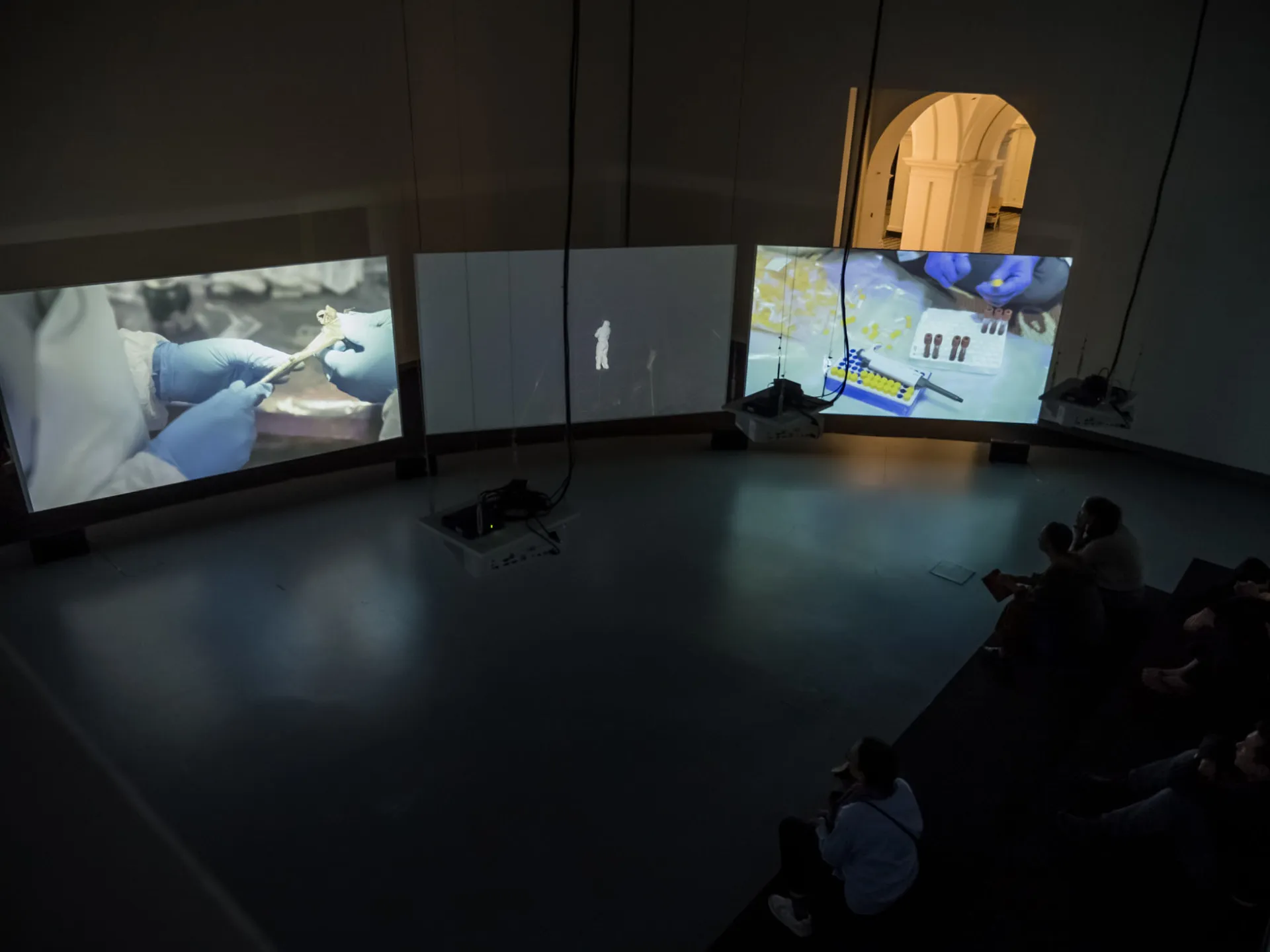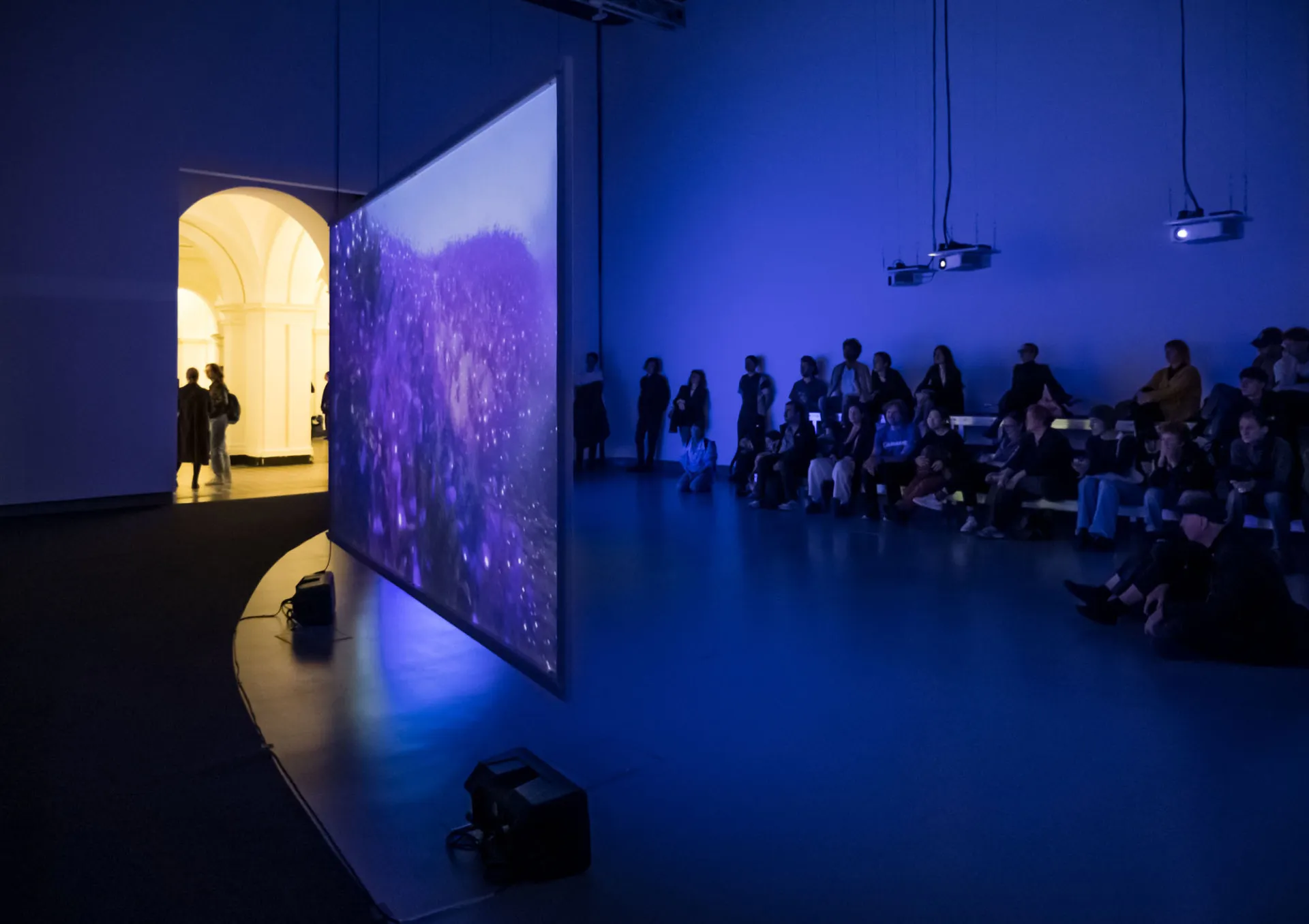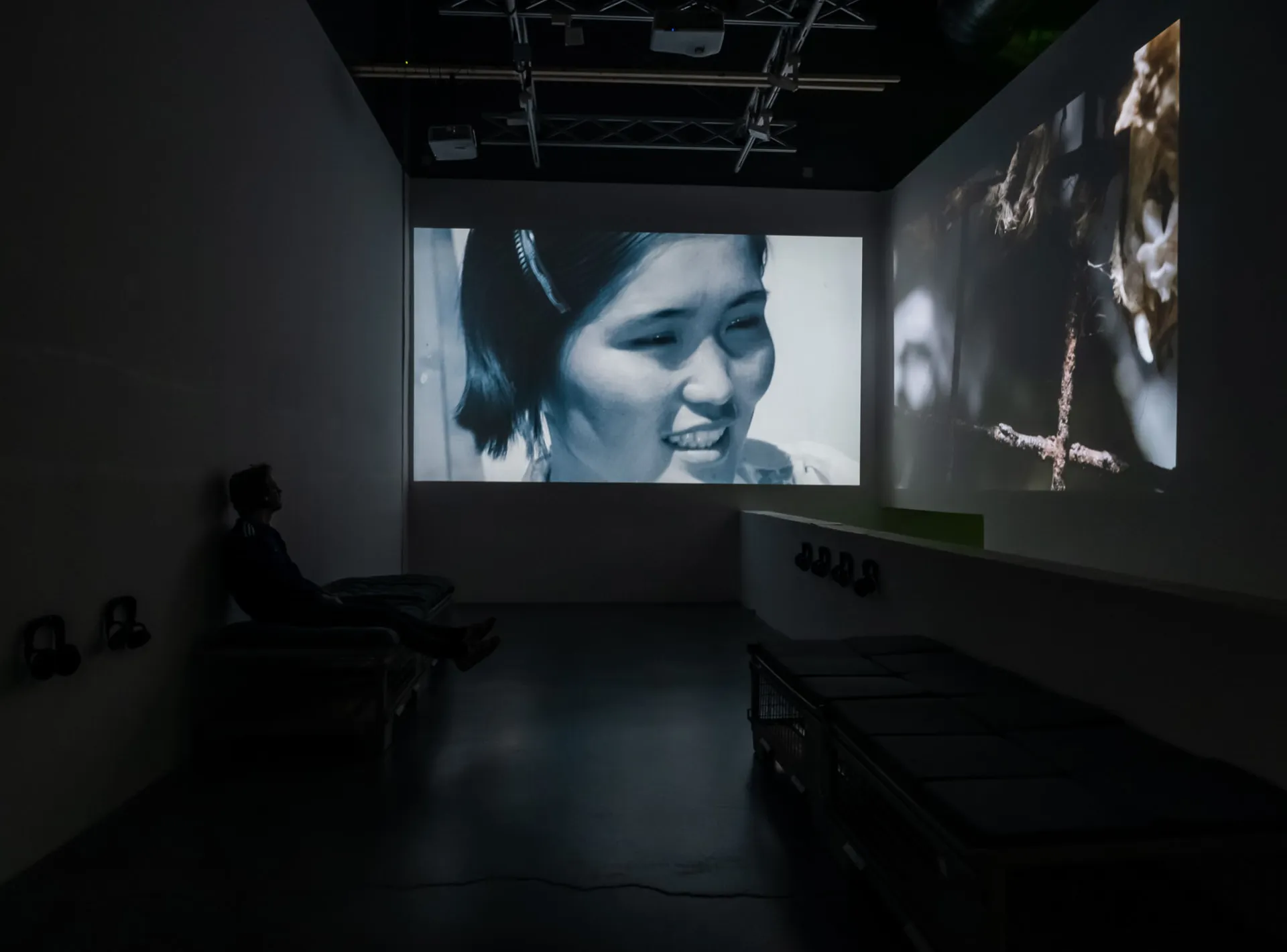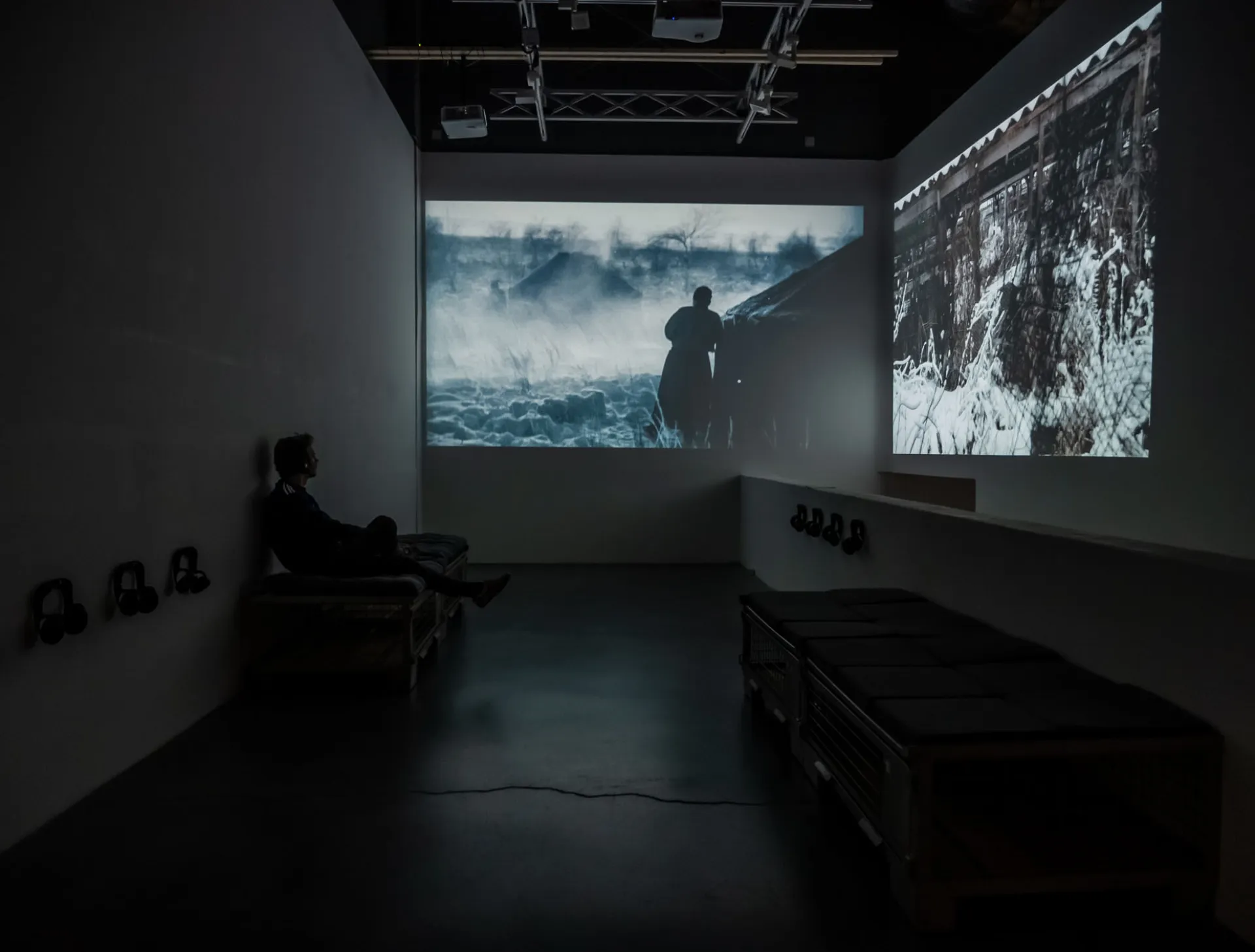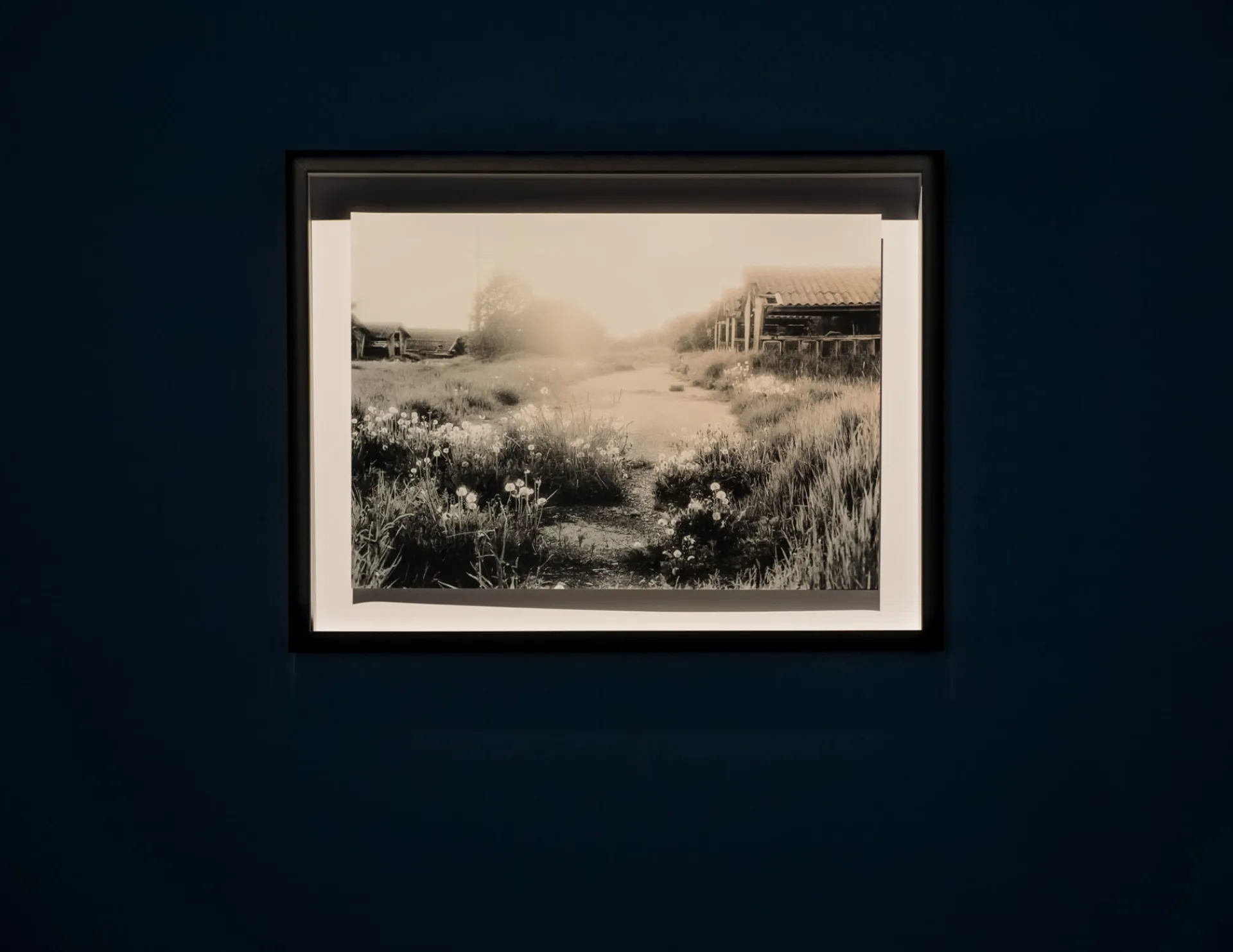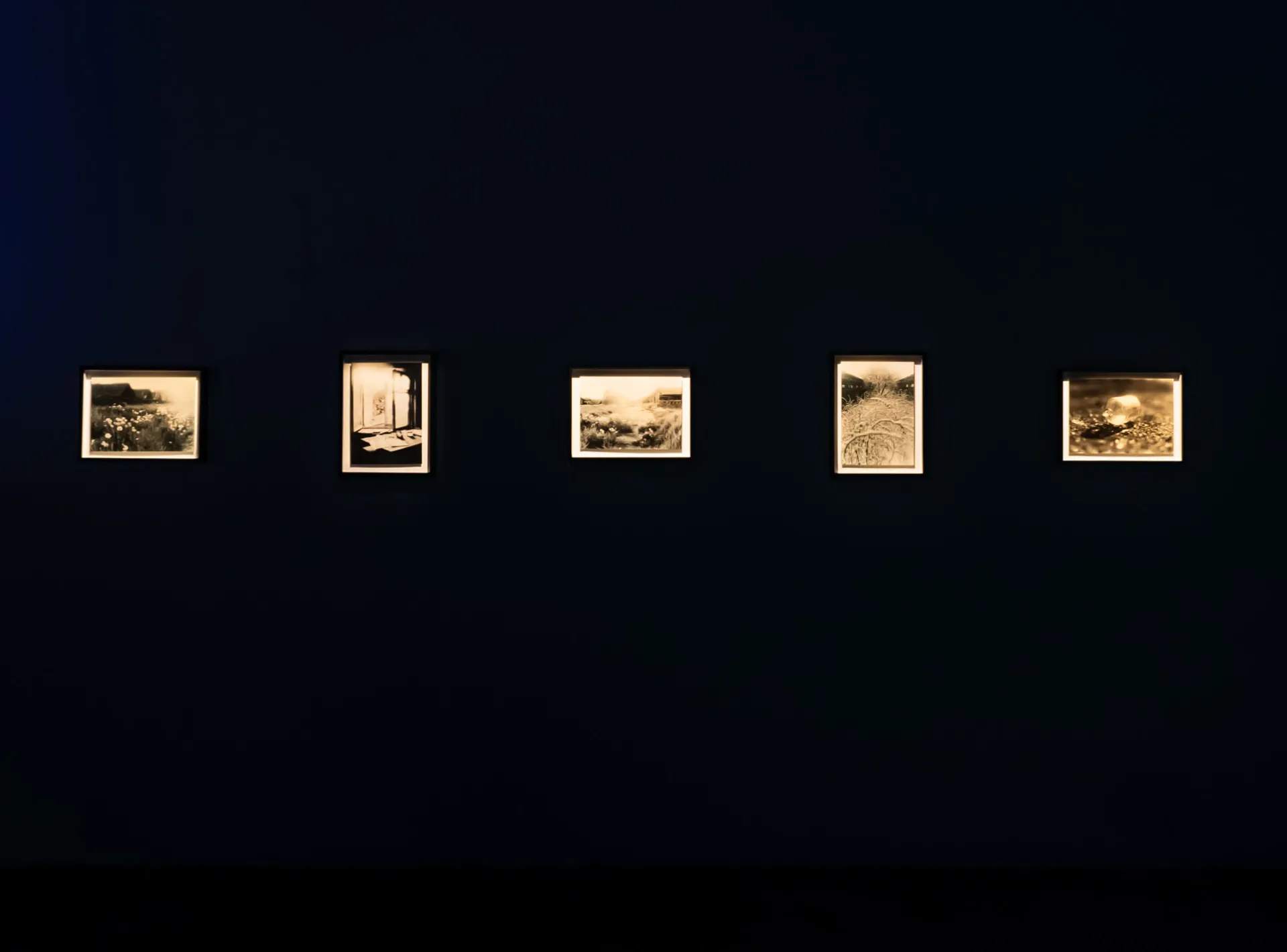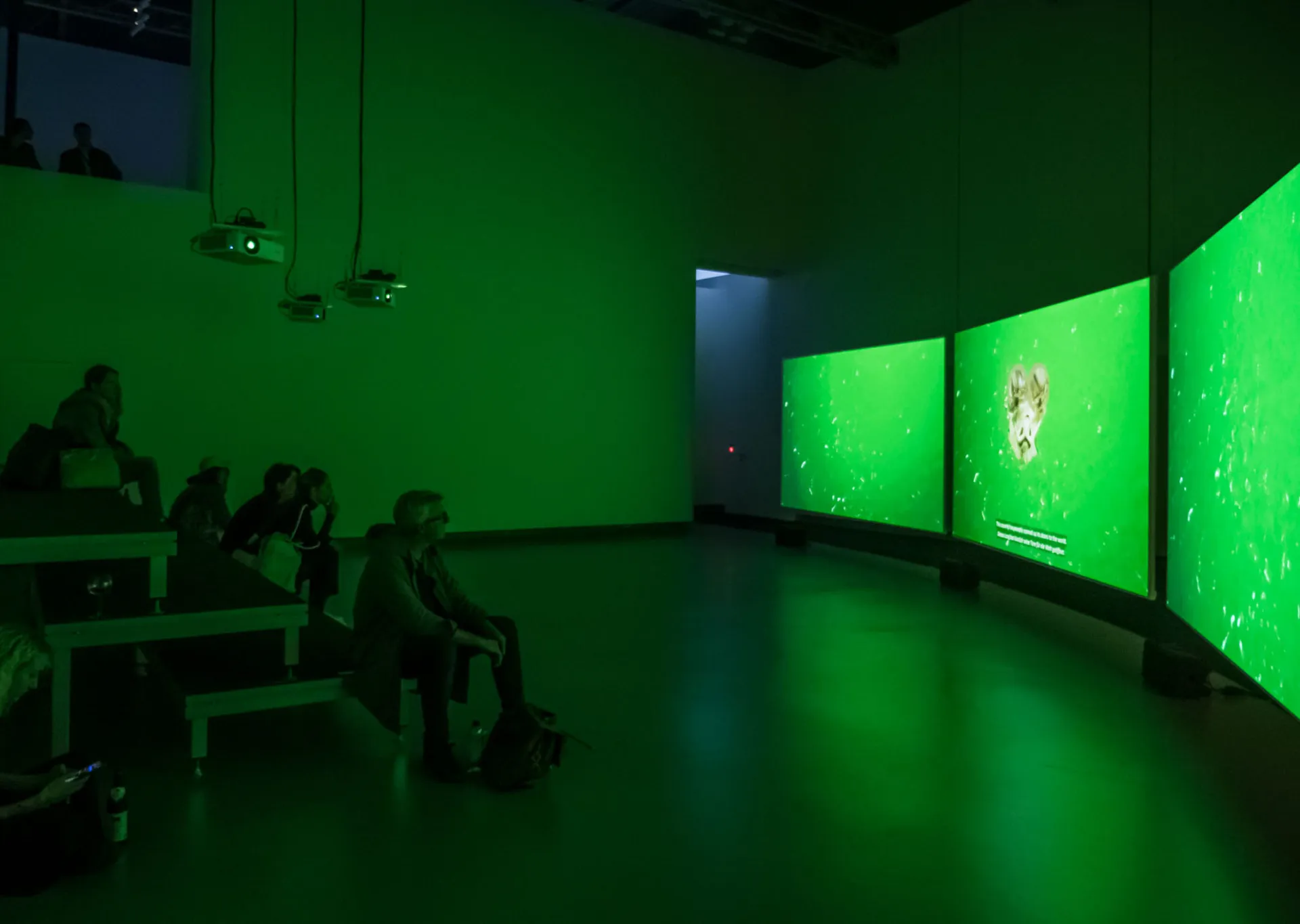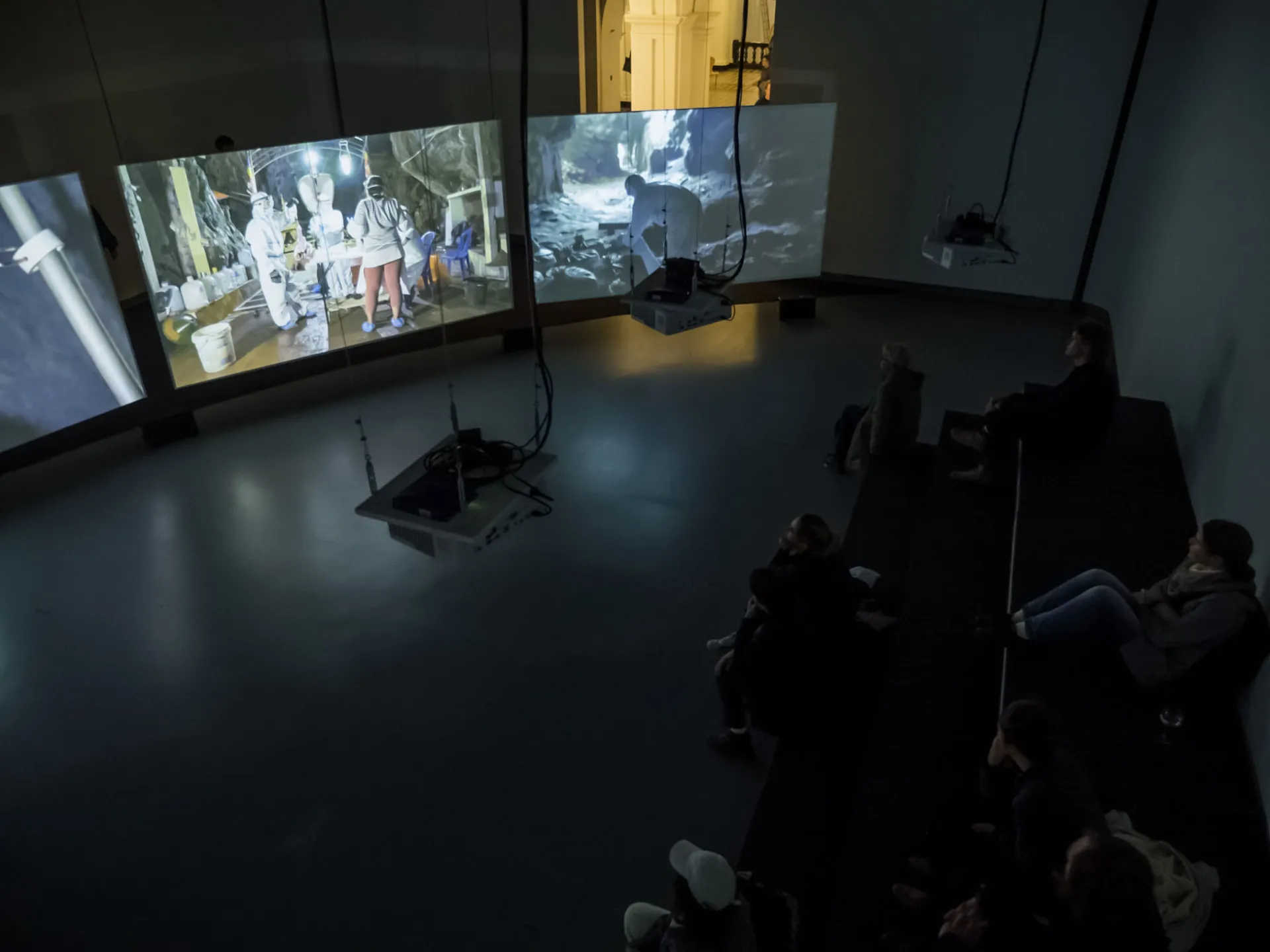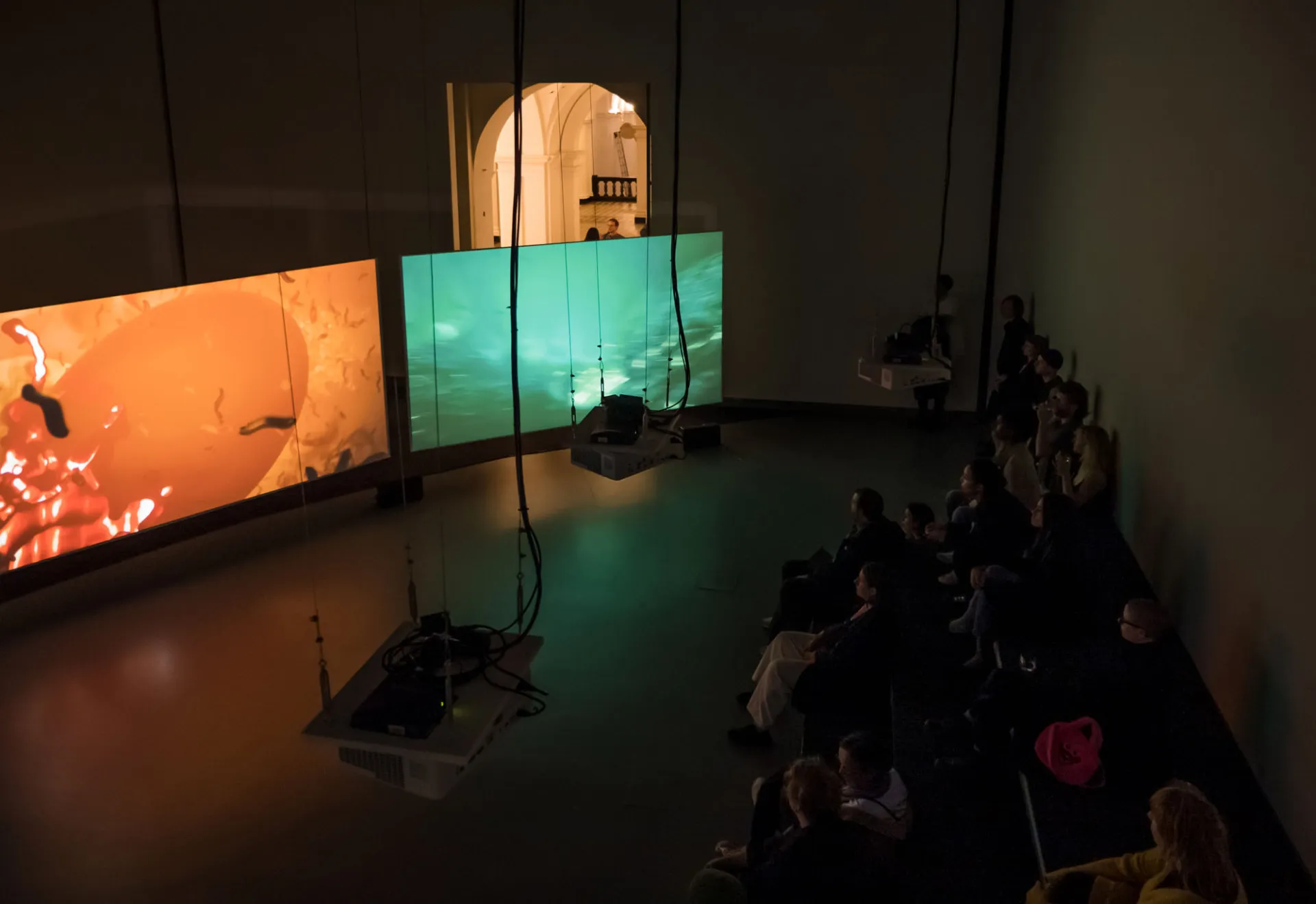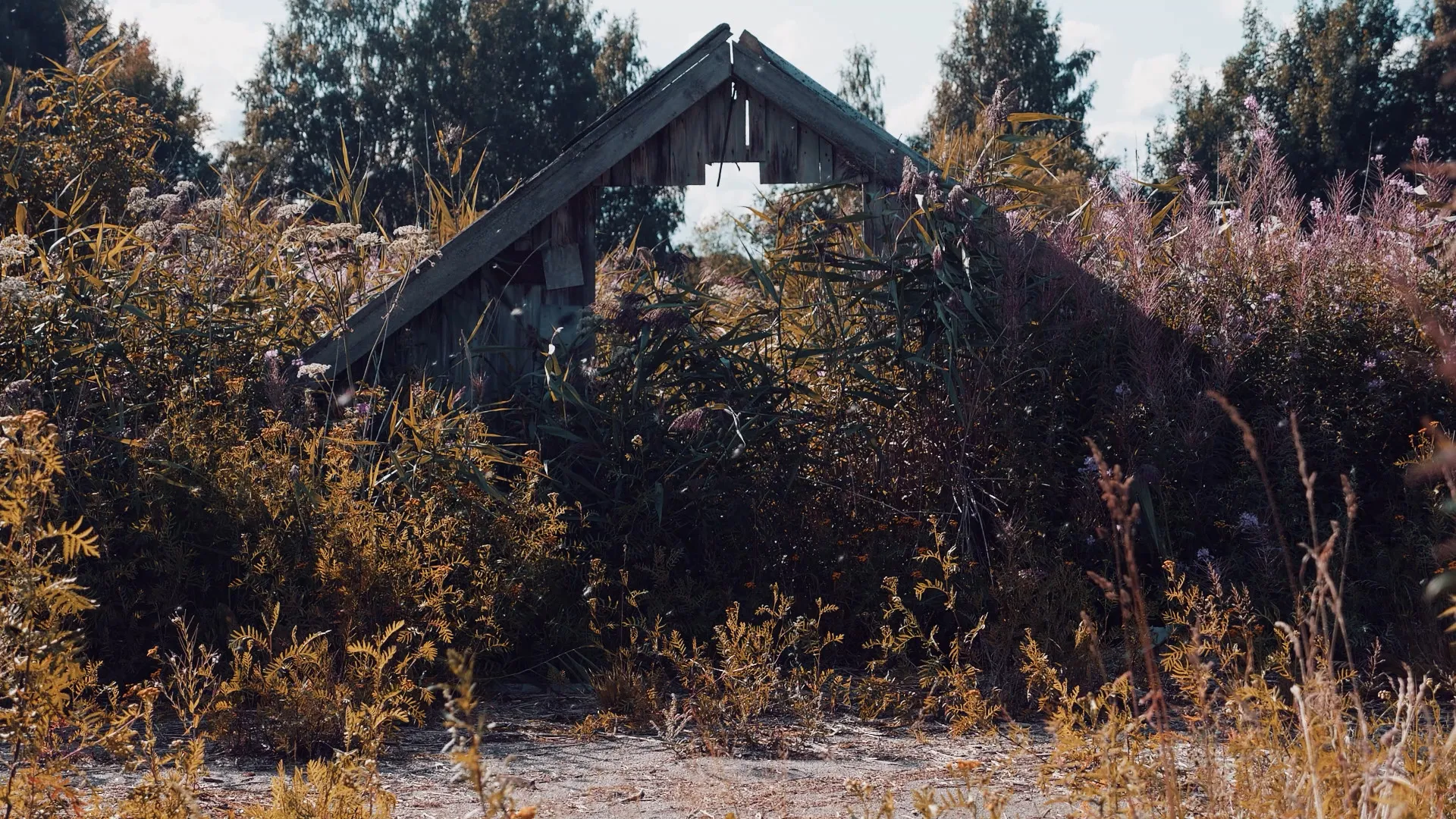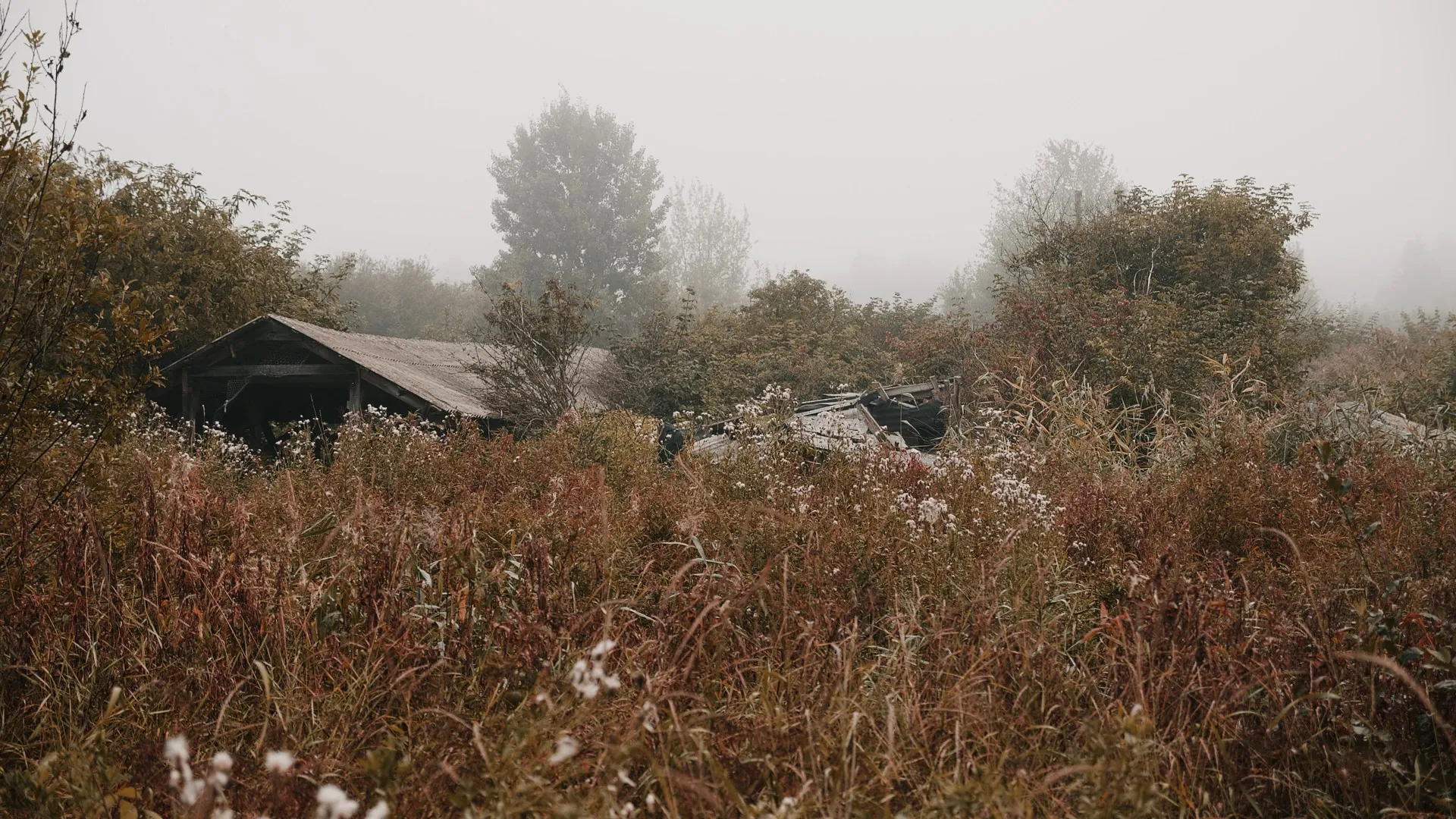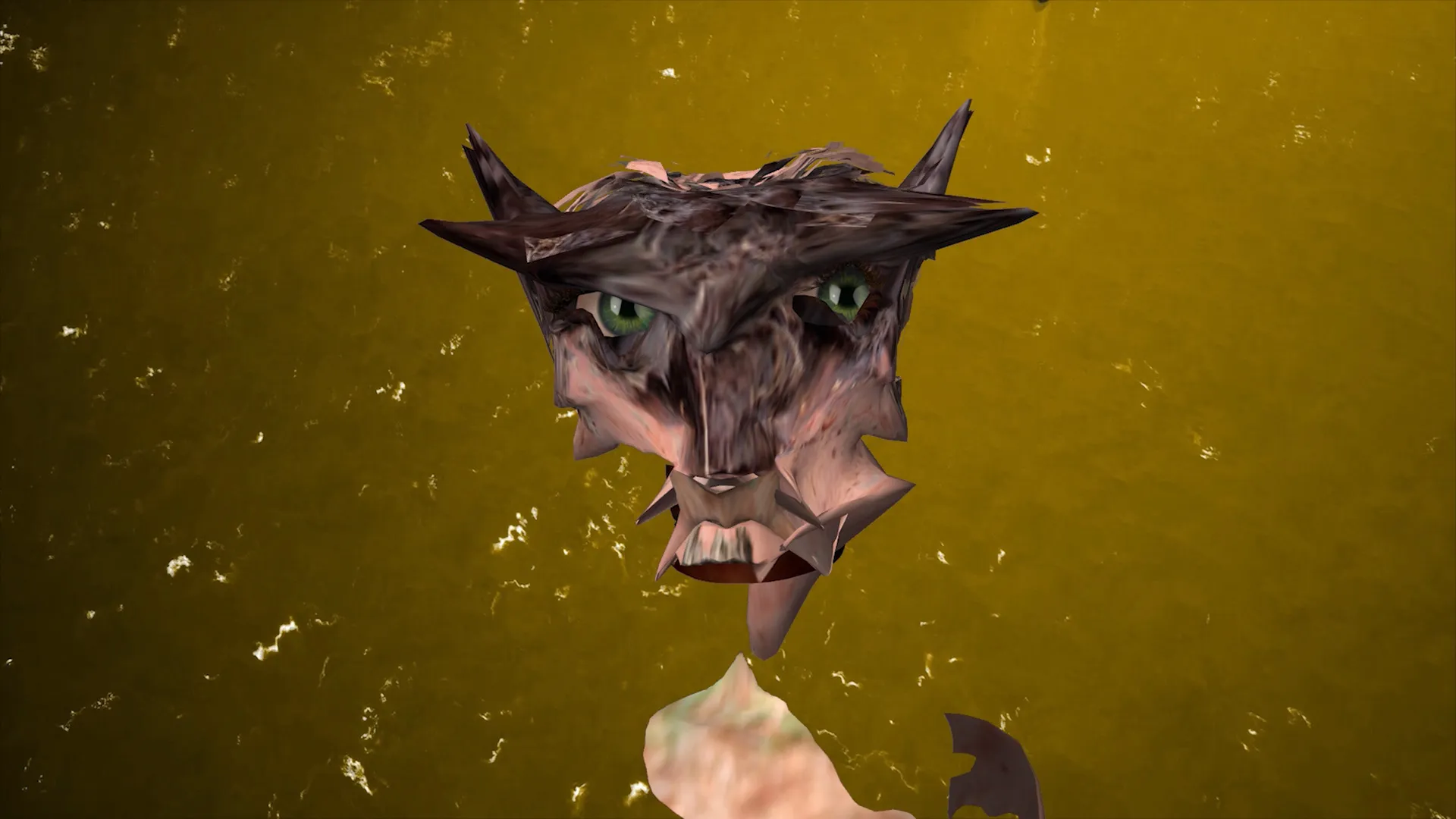paradoks 2023: UNEARTH
05.–22.10.2023
Eröffnung
5.10. 18:30 Uhr in der HGB Galerie,
20:00 Uhr im KV — Verein für Zeitgenössische Kunst Leipzig
Die Videokunst-Ausstellung paradoks verortet sich an der Schnittstelle von bildender Kunst und Bewegtbild und widmet sich dokumentarischen Formaten jenseits des Kinosaals.
Die dritte Ausgabe von paradoks fragt vom 5. bis 22. Oktober 2023 unter dem Titel UNEARTH nach der Beschaffenheit des kulturellen Gedächtnisses im Anthropozän. Welche Mythen, Utopien, Rituale und Erzählungen prägen unsere Vorstellung vom Naturraum, der Tierwelt und dem Anthropozän – dieser geochronologischen Epoche, in der der Mensch maßgeblichen Einfluss auf das Geschehen in den planetaren Atmo- und Biosphären nimmt? Wie wird Vergangenes durch die vom Menschen veränderten Landschaften erinnert? Welche Mahnungen enthalten von der Natur überwucherte Ruinen und Artefakte?
Im Zentrum stehen vier Mehrkanal-Arbeiten, die an den Rändern des Dokumentarischen operieren und über zwei Wochen lang in der Galerie der Hochschule für Grafik und Buchkunst sowie im KV — Verein für Zeitgenössische Kunst Leipzig in der Kolonnadenstraße zu sehen sind.
In der HGB Galerie treten Nick Teplovs THE COMMUNE und DE ANIMA von Clara Jo in Dialog miteinander und reflektieren anhand von Landschaften, ihren tierischen Bewohnern und menschlichen Hinterlassenschaften auf globaler Ebene die Verwobenheit von Ökosystemen mit sozialen Faktoren wie Race, Gender und den Ausprägungen (neo)kolonialer Machtverhältnisse.
Nick Teplov stellt mit THE COMMUNE die Ruine einer sowjetischen Pelztierfarm ins Zentrum seiner Zweikanal-Installation. Die Überreste der verlassenen Farm werden zu Projektionsflächen, die in ihrer Architektur und Konstruktion Straflagern ähneln. Durch die Verwendung von Archivmaterial aus einem stalinistischen Propaganda-Film begibt sich Teplov auf die Suche nach den Rissen innerhalb der kollektivistischen, sozialistischen Utopie. Clara Jo beleuchtet in DE ANIMA die poröse Membran zwischen Mensch, Tier und Landschaft, die in Zeiten globaler Vernetzung zur hochriskanten Schnittstelle mutieren kann. In Myanmar begleitete sie 2018 Wildtierärzt:innen bei der Suche nach potenziell für den Menschen gefährlichen Coronavirus-Stämmen bei Fledermäusen. Dabei treffen mit den in der HGB Galerie ausgestellten Arbeiten unterschiedliche Zeitebenen aufeinander: Während die Ruinen der Farm zunehmend überwuchern und als totalitäres Mahnmal verschwinden, wirken die Biolog:innen mit ihren Untersuchungen in Fledermaushöhlen im Jahr 2018 wie Vorboten der bevorstehenden Pandemie.
MORI von Su Yu Hsin und TROPICAL STORY des Kollektivs ikkibawiKrrr loten im KV ebenfalls miteinander verwobene Dimensionen des Natur-Mensch-Verhältnisses aus. In ihnen stehen performte Rituale, Artefakte und Erinnerungsräume im Mittelpunkt, die sich wiederholen, verändern oder physisch in die Landschaft einschreiben. Die Natur dient dabei als Quelle von Wissen und Inspiration für das Erzählen von Geschichte(n).
Künstler*innen-Gespräche und ein umfangreiches Rahmenprogramm ergänzen die Installationen.
Zusammen mit der Cinémathèque Leipzig präsentiert paradoks an zwei Abenden Kurzfilme und Performances. Unter dem Titel LANDSCAPE werden dabei künstlerische Positionen verhandelt, in denen die Landschaft zugleich Hintergrund und Vordergrund ist, Objekt der menschlichen Beobachtung und Subjekt, das den Beobachtungshorizont vorgibt. SEASCAPE wiederum versammelt Arbeiten, die entlang der Wasserkante verlaufende politische und historische Konflikte in den Blick nehmen sowie Techniken emotionaler und mythischer Bedeutungsproduktion untersuchen, in deren Zentrum das Meer steht. Naomi Hennig, Julia Mensch und Vanja Smiljanić ergänzen die Kurzfilmprogramme mit performativen Interventionen.
In der Sektion parasound, die sich den akustischen Möglichkeiten dokumentarischer Formen widmet, wird Jacob Kirkegaard im UT Connewitz die Klangwelten zweier seiner Arbeiten live performen. Im Fokus stehen dabei die sonaren Landschaften des Krieges und die umweltverändernde Kraft des atomaren Super-GAUs von Tschernobyl.
In Zusammenarbeit mit dem WRO Art Center (Wrocław, Polen) zeigen wir im .mpeg auf der Lützner Straße eine Videoarbeit von Emanuel Gollob über Robotik, K.I. und die Ambivalenz der Fortbewegung.
paradoks ist ein Projekt der Filmischen Initiative Leipzig (FILZ) und von GEGENkino. In Kooperation mit der HGB Galerie, dem KV — Verein für Zeitgenössische Kunst Leipzig e.V., der Cinémathèque Leipzig, dem UT Connewitz und dem WRO Art Center.
Gefördert durch das Kulturamt der Stadt Leipzig und der Kulturstiftung des Freistaats Sachsen. Diese Maßnahme wird mitfinanziert durch Steuermittel auf der Grundlage des vom Sächsischen Landtag beschlossenen Haushaltes.
The video art exhibition paradoks is located at the intersection of visual art and moving image and is dedicated to documentary formats beyond the cinema hall.
The third edition of paradoks, from October 5 to 22, 2023, under the title UNEARTH, asks about the nature of cultural memory in the Anthropocene. What myths, utopias, rituals, and narratives shape our conception of natural space, wildlife, and the Anthropocene - this geochronological epoch in which humans exert significant influence on events in the planetary atmospheres and biospheres? How is the past remembered through human-altered landscapes? What reminders do ruins and artifacts overgrown by nature contain?
The focus is on four multi-channel works that operate at the edges of the documentary and can be seen for two weeks at the gallery of the Academy of Fine Arts and at KV - Verein für Zeitgenössische Kunst Leipzig in Kolonnadenstraße.
In the HGB Gallery, Nick Teplov's THE COMMUNE and DE ANIMA by Clara Jo enter into dialogue with each other and reflect on the interconnectedness of ecosystems with social factors such as race, gender and the manifestations of (neo)colonial power relations on a global scale by means of landscapes, their animal inhabitants and human legacies.
With THE COMMUNE, Nick Teplov places the ruins of a Soviet fur farm at the center of his two-channel installation. The remains of the abandoned farm become projection surfaces that resemble penal camps in their architecture and construction. Using archival footage from a Stalinist propaganda film, Teplov goes in search of the cracks within the collectivist, socialist utopia. In DE ANIMA, Clara Jo illuminates the porous membrane between humans, animals, and landscape that can mutate into a high-risk interface in times of global interconnectedness. In Myanmar in 2018, she accompanied wildlife veterinarians in their search for strains of coronavirus in bats that are potentially dangerous to humans. In the works exhibited at the HGB Gallery, different time levels collide: while the ruins of the farm are becoming increasingly overgrown and disappaearing as a totalitarian memorial, the biologists' investigations in bat caves in 2018 seem like harbingers of the impending pandemic.
MORI by Su Yu Hsin and TROPICAL STORY by the collective ikkibawiKrrr also explore interwoven dimensions of the nature-human relationship in KV. In them, the focus is on performed rituals, artifacts, and memory spaces that repeat, change, or physically inscribe themselves into the landscape. Nature serves as a source of knowledge and inspiration for the telling of story(s).
Artists' talks and an extensive supporting program complement the installations.
Together with the Cinémathèque Leipzig, paradoks presents short films and performances on two evenings. Under the title LANDSCAPE, artistic positions are negotiated in which the landscape is both background and foreground, object of human observation and subject that defines the horizon of observation. SEASCAPE, on the other hand, brings together works that examine political and historical conflicts along the water's edge, as well as techniques of emotional and mythical meaning production centered on the sea. Naomi Hennig, Julia Mensch and Vanja Smiljanić complement the short film programs with performative interventions.
In the parasound section, dedicated to the acoustic possibilities of documentary forms, Jacob Kirkegaard will perform the soundscapes of two of his works live at UT Connewitz. The focus will be on the sonic landscapes of war and the environmentally transformative power of the Chernobyl nuclear super-GAU.
In collaboration with the WRO Art Center (Wrocław, Poland), we will show a video work by Emanuel Gollob about robotics, A.I. and the ambivalence of locomotion at the .mpeg on Lützner Straße.
paradoks is a project of the Filmische Initiative Leipzig (FILZ) and GEGENkino.
In cooperation with HGB Galerie, KV - Verein für Zeitgenössische Kunst Leipzig e.V., Cinémathèque Leipzig, UT Connewitz and WRO Art Center.
Supported by the Cultural Office of the City of Leipzig and the Cultural Foundation of the Free State of Saxony. This measure is co-financed by tax funds on the basis of the budget passed by the Saxon state parliament.

